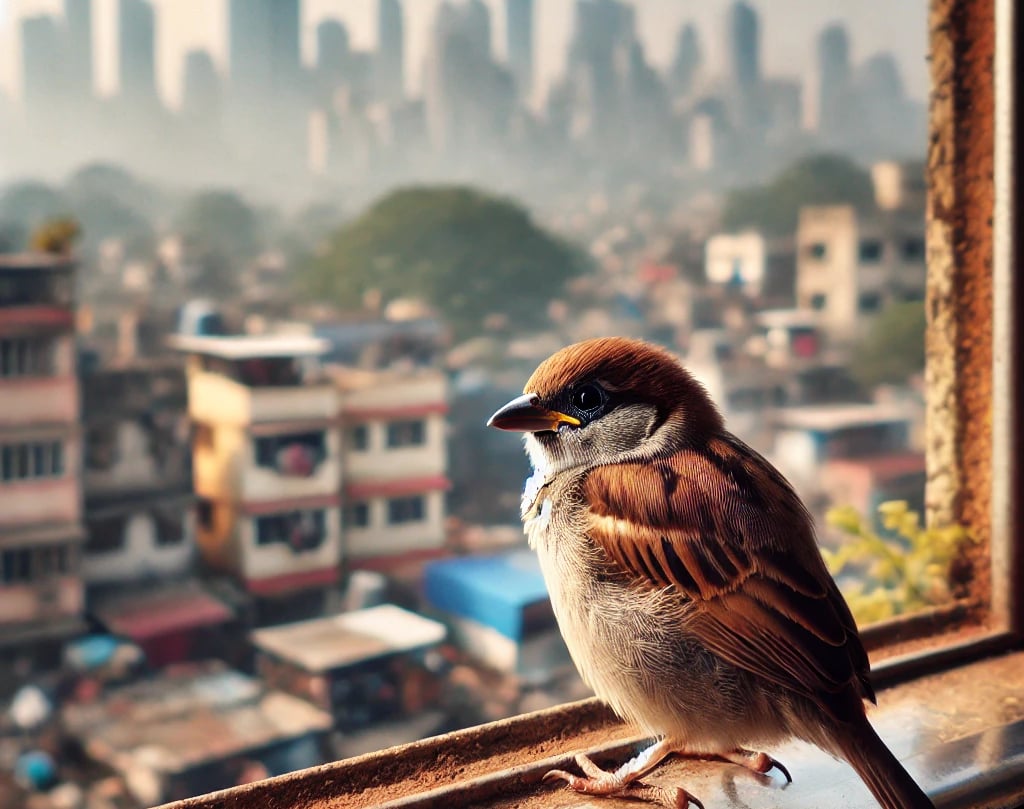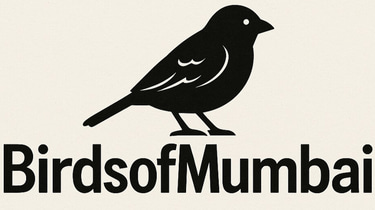The Dwindling House Sparrow Population in Mumbai: An Urgent Call for Conservation
Rajiv Soni
11/1/20245 min read
For generations, the chirping of house sparrows (Passer domesticus) has been a familiar sound in Mumbai. These small, brown-and-grey birds are deeply woven into the city’s cultural and natural fabric. However, in recent decades, their numbers have been dwindling, raising concerns about the stability of urban biodiversity and the impacts on Mumbai’s ecosystem. This article explores the causes behind the decline in house sparrow populations, emphasizes their ecological importance, and provides actionable ways to help sustain their numbers. Additionally, it highlights the efforts of organizations working toward this cause and underscores the need for citizen awareness and engagement.
The Importance of House Sparrows in Mumbai’s Ecosystem
House sparrows play a crucial role in maintaining ecological balance within Mumbai’s urban landscape. As insectivores, they feed on a variety of pests, helping to control insect populations that would otherwise damage plants and crops. Sparrows are also important in the food chain, serving as prey for raptors and other larger birds, which rely on smaller birds for sustenance.
In addition to their ecological functions, house sparrows are indicators of environmental health. A thriving sparrow population suggests a stable ecosystem with accessible food sources, minimal pollution, and abundant nesting areas. Conversely, a decline in sparrow numbers can indicate underlying environmental issues such as habitat loss, pollution, and excessive use of pesticides.
Despite their modest size, sparrows contribute to pollination as they feed on nectar-bearing flowers. In this way, sparrows support the growth of green spaces within Mumbai, from local parks to home gardens, helping plants reproduce and thrive in the urban ecosystem.
Reasons for Decline in Sparrow Population
The decline of house sparrows in Mumbai can be attributed to a variety of factors, many of which are associated with urbanization and modern development:
1. Loss of Habitat: With rapid urbanization, Mumbai has seen the replacement of old buildings with high-rise apartments and commercial complexes. Modern buildings often lack the crevices and ledges where sparrows traditionally nest, leaving fewer safe spaces for these birds to breed and rest.
2. Decrease in Food Sources: The availability of natural food sources like seeds and insects has diminished in densely populated areas. Additionally, with the decline in traditional agricultural practices and the rise of packaged, processed food, sparrows find fewer grains to feed on.
3. Electromagnetic Radiation from Mobile Towers: Several studies suggest that the electromagnetic waves from mobile towers can interfere with sparrows’ ability to navigate and communicate. Although the full extent of this impact is still under study, electromagnetic radiation is believed to be one of the contributing factors to their decline.
4. Pollution: Air and noise pollution in Mumbai pose significant risks to house sparrows. Noise pollution disturbs their communication and breeding activities, while poor air quality impacts their respiratory health, making it difficult for them to thrive in certain parts of the city.
5. Excessive Use of Pesticides: The widespread use of pesticides in urban gardens and farmlands reduces the population of insects, which are a vital part of the sparrow’s diet, especially for feeding their young.
Ways to Sustain and Restore the Sparrow Population
To reverse the decline in Mumbai’s house sparrow population, efforts must focus on providing suitable habitats, food sources, and a pollution-free environment. Here are some practical measures that can support this goal:
1. Create Nesting Spaces: Installing birdhouses in residential complexes, schoolyards, and public gardens can provide safe nesting sites for sparrows. Birdhouses should be small, with narrow entrances, to protect the birds from larger predators.
2. Promote Organic Gardening: Avoiding chemical pesticides in urban gardens, parks, and residential complexes helps increase the availability of insects that sparrows rely on for food. Organic gardening practices encourage a diverse ecosystem, benefiting sparrows and other pollinators.
3. Reduce Noise and Air Pollution: Reducing pollution through cleaner transportation and regulated noise levels, particularly in residential areas, can create a more habitable environment for sparrows. Efforts to control noise pollution, especially near parks and gardens, will create safer zones for sparrows to nest and breed.
4. Sparrow-Friendly Feeding Stations: Setting up small bird feeders in accessible locations with grains like millet, rice, and cracked corn provides a steady food source. It’s essential to maintain cleanliness around these feeders to prevent disease.
5. Raise Awareness and Community Involvement: Educating citizens about the plight of house sparrows and encouraging small-scale conservation efforts can make a significant impact. Informational boards in parks and public areas can teach people about sparrows’ role in the ecosystem and the simple ways they can help support their population.
Organizations Working to Protect House Sparrows
In response to the declining sparrow population, several organizations are working to protect these birds and create awareness among citizens:
1. Nature Forever Society: This organization, founded by conservationist Mohammed Dilawar, has been instrumental in raising awareness about the house sparrow’s plight. Nature Forever Society launched World Sparrow Day, observed on March 20, as a global initiative to raise awareness about sparrow conservation. They also promote the installation of nest boxes and bird feeders to provide shelter and food for sparrows.
2. Bombay Natural History Society (BNHS): BNHS is one of India’s oldest conservation organizations, actively engaged in various bird conservation projects, including efforts to protect house sparrows. Through research, advocacy, and community engagement, BNHS works toward creating a sustainable environment for urban birds, including sparrows.
3. Sanctuary Nature Foundation: Sanctuary Nature Foundation focuses on environmental education and conservation. Through their publications, workshops, and programs, they inform citizens about the ecological importance of sparrows and encourage communities to participate in bird conservation efforts.
The Role of Public Awareness
Creating awareness about the decline in house sparrow populations and the measures needed to protect them is essential for long-term conservation. Here are ways to promote awareness in Mumbai:
1. Educational Campaigns: Organize awareness campaigns that highlight the importance of sparrows in the ecosystem. Campaigns can be run in schools, residential complexes, and community centers, informing citizens about sparrows’ role in pest control, pollination, and biodiversity.
2. School and Community Programs: Educational programs focused on children can foster a sense of responsibility toward wildlife from a young age. Schools can set up sparrow-friendly gardens and birdhouses to involve students in conservation activities.
3. Leveraging Media and Social Platforms: Social media platforms provide an excellent opportunity to reach a wide audience. Sharing information, success stories, and practical tips for supporting sparrows can encourage citizens to participate in conservation efforts. Local influencers and environmentalists can help amplify these messages.
4. Observing World Sparrow Day: Celebrating World Sparrow Day on March 20 is a great opportunity to unite communities in support of sparrow conservation. Events, seminars, and bird-watching sessions can be organized to promote awareness and appreciation for sparrows.
5. Encouraging Citizen Science: Community-driven bird monitoring initiatives allow residents to contribute valuable data on sparrow sightings and nesting locations. Citizen science platforms, such as the eBird database, empower people to take part in sparrow conservation by documenting their observations.
Conclusion
The decline in the house sparrow population in Mumbai is a wake-up call to the pressing need for urban conservation. As integral components of the city’s ecosystem, sparrows contribute to insect control, pollination, and serve as indicators of environmental health. By providing them with safe nesting spaces, reliable food sources, and a pollution-free environment, Mumbai can create a more hospitable habitat for these iconic birds.
Efforts from conservation organizations, community groups, and individual citizens are crucial to sparrow conservation. By fostering awareness, supporting ecological initiatives, and adopting sparrow-friendly practices, we can work together to bring back the chirping of house sparrows to Mumbai’s urban landscape. Sparrows symbolize the city’s resilience and adaptability, and with dedicated conservation efforts, they can continue to thrive amidst the bustling life of Mumbai.


Discover about Mumbai's vibrant birdlife and the conservation efforts by nature lovers.
© 2025. All rights reserved.
